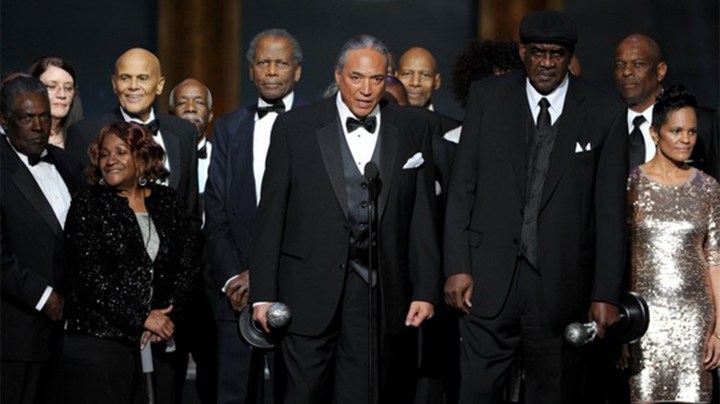
The history of Black stunt people’s fight for equal opportunity in Hollywood
The history of Black stunt people’s fight for equal opportunity in Hollywood

There’s a park in Compton, California, called Athens Park. It has some grassy fields, a couple of baseball diamonds and play structures. There’s nothing extraordinary about it, no plaque or monument commemorating its role in Hollywood’s history. But there should be. Because it was in this park back in the 1960s that a group of Black men started meeting regularly and together hatched an ambitious plan that changed their lives and future generations: They trained to become Hollywood stuntmen.
At first, the men who gathered in Athens Park met after getting off work at their day jobs, according to Alex Brown, who was part of that group. “We would meet up in the evening and we were doing jumping jacks and with the help of a few people learn how to throw punches,” he said.
It wasn’t long before people in the neighborhood started to wonder exactly what kind of fight he and his friends were training for. There was a lot of racial tension at that time. “We actually had the police come by and set up outside our training and watch us,” Brown said.
Little did the police know that what they were watching was a group of men training to become stuntmen. Back in the early 1960s, there was no such thing as a Black stuntman in Hollywood. The practice then was to do what was called a “paint down.” A white stuntman painted his body black to double a Black actor.
In 1965, that changed. One of the lead actors in the TV show “I Spy,” Bill Cosby, refused to let a white stuntman play his double. Which is how Calvin Brown became the first Black stuntman in Hollywood.

It was hard for Black stuntmen to get training and break into the business. The men who met in Athens Park formed their own group called the BSA, the Black Stuntmen’s Association.
“That’s all we ever wanted was jobs,” Brown said. “Just an equal piece of the pie, a little sliver. So as we began to make little inroads to the motion picture business the white group was getting insulted that we began to infringe on their financial base.”
Being a stuntman was very lucrative compared to what BSA members made at their day jobs. William J. Upton, the youngest BSA member, was just 12 years old when he showed up at Athens Park.
“My mother and father were working, maybe making like $60, $65 a piece a week back in 1967,” he said.
At that same time, working stuntmen made $120 a day. “And my mother said: ‘What? $120 a day?’ She said: ‘Boy, go over and join that group,’” Upton recalled.
Over the years the BSA filed dozens of lawsuits in its fight for equality in the film industry including a 1976 case that forced the major studios to abide by federal mandates against discriminatory hiring. And as the association grew it broadened its mission to include gender equity for stunt performers. Today they’re promoting the recruitment of women and people of color as stunt coordinators, the ones with hiring power.
“Right now we probably have 0.5% women who are coordinating,” said BSA member La Faye Baker, who became the first African American female stunt coordinator to stunt coordinate on a big budget project in 1998, when she worked on “Introducing Dorothy Dandridge,” starring Halle Berry. She worked on projects where stunt coordinators didn’t hire any women or people of color. “If I’m a stunt coordinator, I’ll think about bringing a diverse group of people,” she said.
Today, most everyone in the BSA is retired. The work they used to do has been taken on by SAG-AFTRA, the union that represents stunt performers. As recently as 2014, SAG-AFTRA investigated a “paint down” that happened at Warner Bros.

SAG-AFTRA is also investigating the practice of “wigging,” when a male stunt performer dresses as a woman to double female actors.
Alex Brown says the fight for equality he and his friends started will never end. “The more we fight, the better it will be for other people, this next generation they have to keep going, too,” he said.
Brown and the surviving members of the BSA are working behind the scenes to get some recognition for the doors they opened. Their next big goal? To raise the $50,000 they need to get a star on the Hollywood walk of fame.
A longer version of this story first aired on KCRW.
There’s a lot happening in the world. Through it all, Marketplace is here for you.
You rely on Marketplace to break down the world’s events and tell you how it affects you in a fact-based, approachable way. We rely on your financial support to keep making that possible.
Your donation today powers the independent journalism that you rely on. For just $5/month, you can help sustain Marketplace so we can keep reporting on the things that matter to you.












